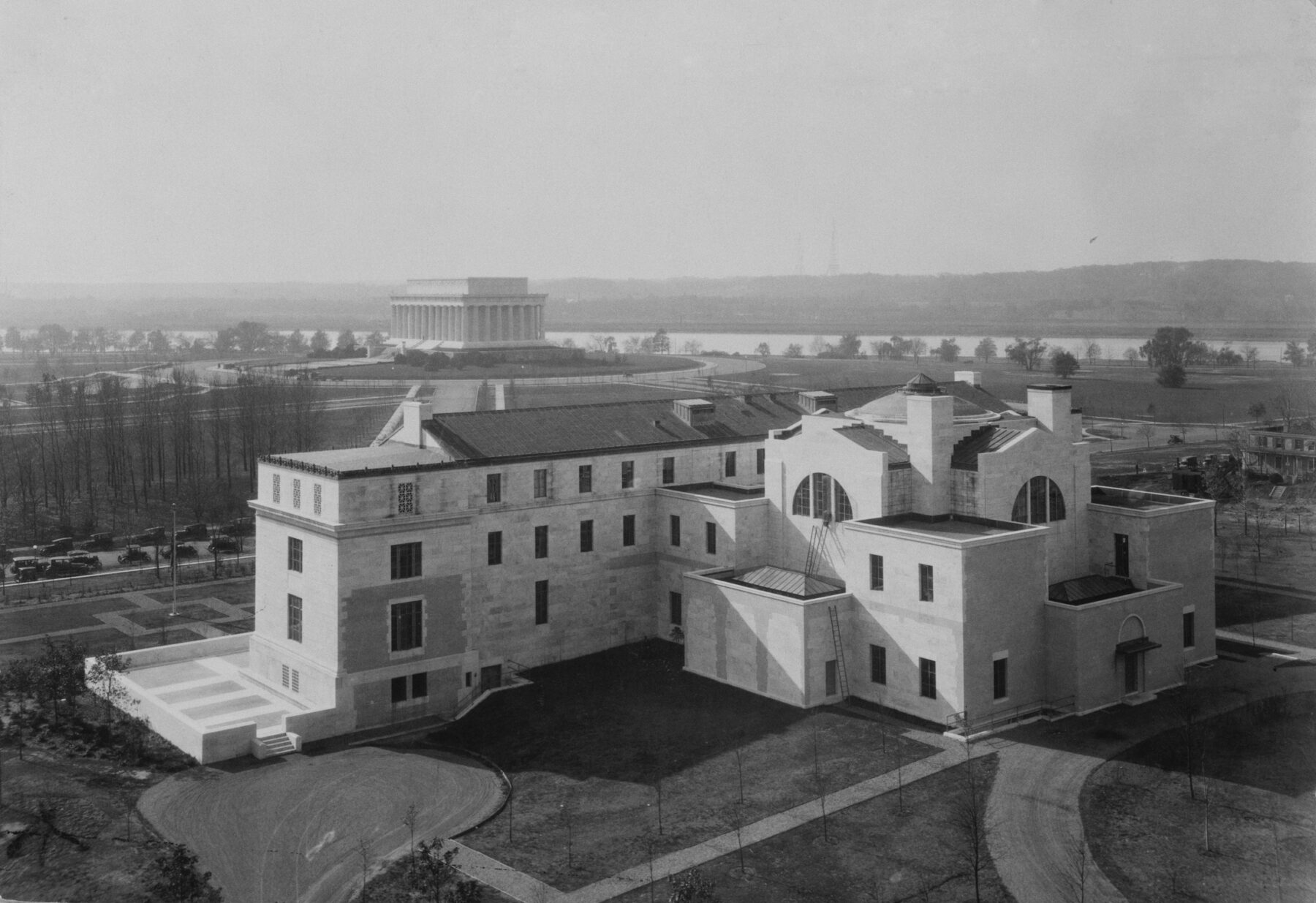Celebrating the Centennial of the National Academy of Sciences Building
This is a special year for the National Academy of Sciences (NAS) as its beautiful headquarters at 2101 Constitution Avenue, NW, in Washington, DC, turns 100 years old. Dedicated by President Calvin Coolidge in April 1924 and designed by architect Bertram Grosvenor Goodhue, the building’s architecture synthesizes classical elements with Goodhue’s preference for “irregular” forms. It harmoniously weaves together Hellenic, Byzantine, and Egyptian influences with hints of Art Deco, giving the building a modern aspect—which is consistent with Goodhue’s assertion that it was meant to be a “modern and scientific building, built with modern and scientific materials, by modern and scientific methods for a modern and scientific set of clients.”
Goodhue, celebrated for his Gothic Revival and Spanish Colonial Revival designs, developed a late-career interest in Egyptian Revival architecture around the time that King Tutankhamun’s tomb was discovered. The NAS building’s design references ancient Egypt with its battered, or inwardly sloping, façade, giving the building an air of monumentality. It depicts the Egyptian god Imhotep, the Great Pyramid of Giza, the Museum of Alexandria, the ancient lighthouse on the island of Pharos, and hieroglyphic decorations. The structure reflects Goodhue’s distinctive aesthetic, and it also harmonizes with the nearby neoclassical Lincoln Memorial, which was under construction when the NAS building was planned.

